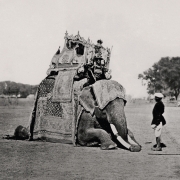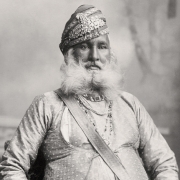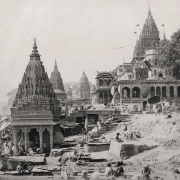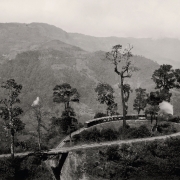
Etcetera
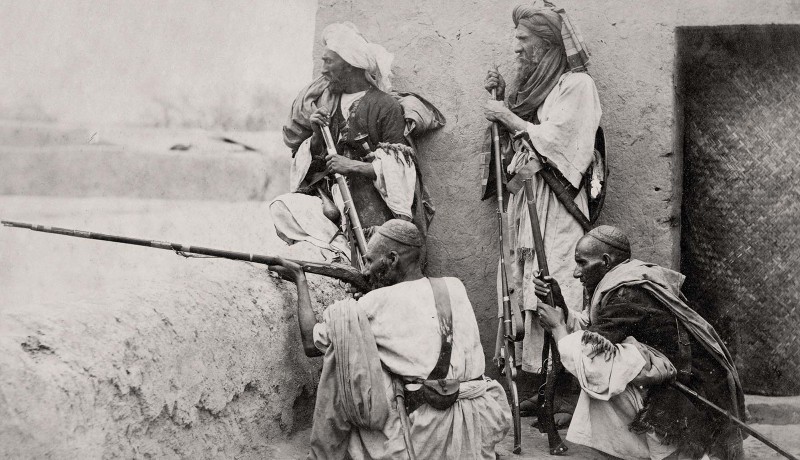
Partha Mukherjee raises a toast to the glory days of a Kolkata icon, Bourne & Shepherd—one of the world’s oldest photo studios that recently shut shop forever
In June this year, a piece of history slipped into oblivion, unsung and unnoticed. No light bulbs popped to mark the occasion when Bourne & Shepherd, arguably the world’s oldest photographic studio, downed its shutters in Central Kolkata one last time. Once patronised by royalty, nobility, viceroys and artistic geniuses, the studio finally conceded defeat to the sweep of technology and the passage of time, 176 years after it opened on 10, Chowringhee Place. The four-storey edifice that housed the studio now looks forlorn. Without its fabulously famous occupant, it’s just another colonial-era building sans its soul.
A page from history
Bourne & Shepherd was founded in 1840 by famous British photographers Samuel Bourne and James Shepherd. There was a time in the mid-19th century when the elite of Kolkata was spotted at three places: at K C Das gorging on sweet delicacies; at Cuthbertson & Harper buying shoes; and at Bourne & Shepherd sitting for hours as a subject in front of the camera. Their patience was handsomely rewarded as the studio would churn out magic in black and white.
This was not only a studio but a treasury of history. Its images of Calcutta from more than a century ago include priceless pictures of Strand Road, the Pontoon Bridge across the River Hooghly that connected Calcutta to Howrah, and bullock carts rolling along the cobbled stretch overlooking the General Post Office. These are among the studio’s many photographs in the archives of Victoria Memorial, Kolkata, and Museum of Art & Photography (MAP), Bengaluru. That’s not all. Some of Bourne & Shepherd’s photographs are also with the Smithsonian Institution in the US, the National Gallery of Portraits in London and the Cambridge University Library.
Standing tall
Back in time, the studio was patronised by the British aristocracy as well as elite Indians. Jayant Gandhi, the last owner who assumed the mantle in 1964, says, “I have heard from my predecessors that Lord Ramakrishna Paramhansa, his wife Sarada Devi, Rabindranath Tagore, his nephew Abanindranath Tagore, Pandit Iswarchandra Vidyasagar, Rudyard Kipling and Field Marshal Sam Manekshaw had all graced the studio.”
According to him, legendary filmmaker Satyajit Ray used to frequent the studio too, to examine period images to verify details he included in his films. “I have helped him browse through pages of old albums, and Charulata and Shatranj Ki Khiladi are testaments to this,” adds Gandhi. “His son Sandip Ray visited us when he was making Gorosthane Sabdhan following the same tradition. We learnt from the master how to remain meticulous and pay attention to every detail in our work.”
Although its photographers experimented with a variety of compositions, portraits were the studio’s biggest strength. “Bourne & Shepherd emerged as a trendsetter in this genre of photography,” says Gandhi. “It was popular for brides-to-be to take their pictures here to send them to matrimonial agencies. Some of its pictures have also been used as documents in legal cases.”
End of an era
Tragedy struck in 1991, when a fire ravaged the studio, destroying its precious collection of photographs. Although it stoically soldiered on, Bourne & Shepherd never fully recovered from this devastating blow. But its biggest challenge was time itself.
“The concept of photography has undergone a sea change,” shrugs Gandhi. “Now, all one needs to take pictures is a smartphone and a PC. Digital photography is all the rage.”
He shares that to keep the studio going, he tried to reinvent the business by concentrating on industrial photography, documentaries and commercial photography, and the studio saw a golden run from the 1970s to the 1980s. “During this period, we had 30 in-house photographers who were sent on prestigious assignments.”
Still, there was no preventing the inevitable. The matter-of-fact Gandhi confesses that emotions ran high when the studio had to hand over the reins. On 28 April, Premshankar Gupta, the studio’s last manager, turned in the key to the property to the insurance company that owns the building.
As if in anticipation of the impending closure, Tasveer Art Gallery recently concluded its year-long exhibition of Bourne & Shepherd images (sourced from the rich holdings of the Museum of Art & Photography) in five cities across the country. The touring exhibition was accompanied by the publication of a new catalogue that carries an original essay by scholar of early Indian photography Hugh Ashley Rayner on the life and works of Samuel Bourne. The studio may have downed its shutters but the photographic legacy of its proprietors will evidently live on.
Photos courtesy: MAP / Tasveer Featured in Harmony — Celebrate Age Magazine September 2016
you may also like to read
-
Cracking the longevity code
Small yet impactful choices can be game-changers, writes Srirekha Pillai At 102, there’s no stopping Chandigarh-based Man Kaur, the world’s….
-
Home, not alone
While a regulatory framework is vital for senior-care facilities, the need of the hour is to develop an ecosystem to….
-
Birthday Girl
Published in a special edition to honour Japanese master storyteller Haruki Murakami’s 70th birthday, Birthday Girl (Penguin; Rs 100; 42….
-
A huge treat for music lovers
Published as the revised and updated second edition, Incomparable Sachin Dev Burman (Blue Pencil; Rs. 599; 470 pages) the authoritative….



